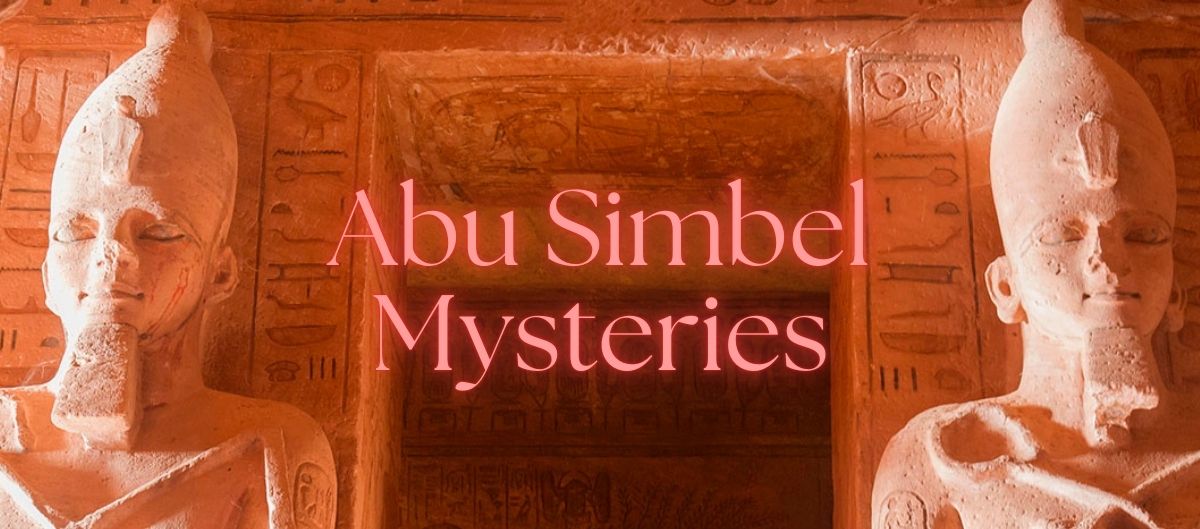The Boy Who Discovered Egypt’s Greatest Pharaoh’s Tomb

This story is epic “Indiana Jones” with hidden treasure, unsolved mysteries, international intrigue, romance, stolen artifacts and a movie set astonishing to even the most jaded viewer. At its heart, a young Egyptian boy with a secret and a couple of ambitious, even greedy explorers willing to listen.





The two temples of Abu Simbel located in Southern Egypt, at the second cataract of the Nile, close to the Sudanese border were built by Ramses II. Egyptologists claim this pharaoh would have chosen the site because it was considered sacred and thus would strengthen his divinity in the eyes of the ancient Egyptians, encouraging them to believe that he was also divine.

And so began this twenty year effort to build these impressive structures, starting around 1244 BC and finishing around 1224 BC.
Scholarship credits Ramses II intentions in building these magnificent temples to:
Commemorate his victory at the Battle of Kadesh. To represent the battle, the base of the temple was carved with figures of bound captives. There are many carvings and polychrome renderings on interior walls depicting these scenes.



Intimidate Egypt’s neighbors, the Nubians. It was Ramses’ way of trying to make an impression as well as to force Egypt’s religion upon these neighbors.

Honor Nefertari: The smaller temple of the two is a monument to his most beloved queen, his favorite of the over two hundred taken during his lifetime. She is depicted in statuary at the opening as his equal, one of only two queens receiving this distinction.

Honor himself: dedicating it to the god Re-Horakhty the god that combined Ra, the Sun god with the falcon god, Horus. The name translates to “Ra (who is) Horus of the Horizons”.



The Great Temple was constructed using the sun’s illumination on February 22 and October 22 to penetrate 180 feet into the inner sanctuary highlighting the statues of King Ramses II, Ra-Horakhty and Amun-Ra along its back wall. Only Ptah, the god of the Underworld, remains in darkness all year round. Why these specific dates were chosen remains a mystery.

By the 6th century BC, the Great Temple was already covered in sand up to the knees of the statues, and both temples were eventually forgotten.

Fast forward to 1813 when Swiss scholar, Johann Ludwig Burckhardt was preparing to leave the area of Lake Nasser, traveling down the Nile. From his boat Burckhardt noticed the front of the great temple but the remaining elevation was buried in the sand up to the necks of the giant colossi. As his wife was gravely ill, he chose to return home where he remained for the next four years. At some point Burckhardt told his friend, Italian explorer Giovanni Belzoni, about the discovery.
Belzoni, without telling his colleague, traveled to the site and was able to excavate the entrance and to enter the base of the monument, reportedly stealing every available treasure.

Abu Simbel, however, was not the name given to the site during antiquity. Many believe that Abu Simbel was the name of a young local boy who had seen the buried temples through the shifting sands and originally guided Burckhardt to the site. Four years later, when Belzoni excavated the area, he named it after the boy who led Burckhardt to the discovery.
The Abu Simbel temples were inaugurated in their new location in 1968, relocated under a UNESCO-led project to prevent them from being submerged by Lake Nasser, an artificial reservoir created by the Aswan Dam. The temples were carefully dismantled, cut into large blocks, and then reassembled in their new location.
Click here for information on the location and hours of operation for the Temples of Abu Simbel.
Related Posts
Captivating Khiva: An Astonishing Life Inside the City Walls
Khiva’s roots stretch back over 2,500 years, but its golden age began in the 16th …
June 7, 2025The Quiet Magic of The Turkmen: Nomads of the Steppe
Nestled in Uzbekistan’s remote northwest, Urgench might not be the first name that jumps out …
June 7, 2025

Leave A Comment